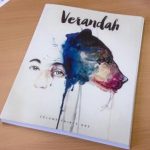

Blog
Welcome to the Busybird blog, where you can find helpful articles, updates, industry news and more. Make sure you stay up to date by signing up to our newsletter below.
The Length of Things
September 29, 2016 One of the greatest freedoms we have as writers is determining the length of our article/story/book/novel.
One of the greatest freedoms we have as writers is determining the length of our article/story/book/novel.
Screenwriting has constraints. Generally, it’s accepted that one page will equal one minute of screen time. This might vary at times (a page might be less or more) but generally evens out. Years ago, it was accepted that your average feature screenplay would be about 120 pages – about two hours. Now, it’s been trimmed down to 100 pages. An episodic drama might be about 45–60 pages (45–60 minutes) and broken into four or five acts. A sitcom might be about 25 pages, have a teaser (the bit they play before the opening credits), three acts, and then the tag (the bit at the end the credits is played over).
Outside of the general three-act structure, prose isn’t necessarily so regimented. Your short story might be 500 words, it might be 5,000 words. Your memoir or self-help book might be 15,000 words, or might be 100,000 words. Your novel could be 30,000 words or could be 130,000 words. Unless you’re writing to a specific market (e.g. a competition, journal, or publisher) which stipulates the word limit, you seemingly have no constraints.
In fact, many may consider it exhilarating to have no constraints. A novel could entertain a litany of characters, span generations, and follow numerous subplots. That memoir could incorporate your life from day one to your ninetieth year. That self-help book could employ every example from your own life experience that you think valid to get your message across. Often, there’s no challenge to finish within a set limit, so why should we? Why not write a sprawling epic? Or a fat, cushy short story? Or an exhaustive self-help book?
Certainly, you could. Any form of writing should be exactly as long as it needs to be – no more, no less. But – outside of getting your first draft down on the page – that’s not an invitation to write forever. And, when it comes time to submit or publish, length is definitely something you need to start considering.
Let’s say you’ve written a romance novel and it’s 250,000 words long. How many romance novels of that size exist on the market? Probably not many. Readers are programmed to an expectation they want met when they pick up a book, and giving them something 3–4 times the length of your average romance novel is probably just going to overwhelm them, if not discourage them. You might argue this is the sort of length you like reading. Great. But that isn’t the standard. It’d be the equivalent of an eight-hour movie.
I’m also a big believer that every revision of your writing should get shorter, yet more packed. Waffling is common in early drafts, e.g. describing a sunrise over a farmstead might take two hundred words in an early draft, but be diluted – and yet done far more emphatically – to half that in revision. That plot point might take a page in an early draft, yet be concentrated to a paragraph in rewriting. Also, repetition is common. When you’re in Chapter 15, you might not remember that you’ve mentioned such and such already in Chapter 3.
Pacing is something else that’s important. Chapter 4 might rollick along, while Chapter 8 might bog down into languorous details that, whilst gorgeous, are unnecessary. Are those details needed? This is important to consider: if you can cut something, and it hasn’t hurt whatever you’re writing – as in the reader won’t even realise something’s missing – then it doesn’t belong there, regardless how much you love it or are proud of it.
Just because you have this boundless playground doesn’t mean you should be boundless yourself. Don’t ever believe that you’re so brilliant that your story will wow readers, hook them, and keep them engaged, regardless – regardless of length, regardless of repetition, regardless of any convention you might care to flout. This is an attitude a lot of inexperienced writers enjoy. That’s not to say you can’t break convention and be successful, but your choices need to be justified.
Be honest with yourself and your work. Examine what other people who are succeeding in your chosen market – whether it’s short story writing, prose, poetry, self-help, business, etc. – are doing. If they’re succeeding, it’s with good reason.
Whilst writing affords you tremendous liberties, they are not liberties you should abuse – particularly out of ego.
Stretch
September 22, 2016 If you’re a writer, you’re just about guaranteed one thing in this life.
If you’re a writer, you’re just about guaranteed one thing in this life.
Can you guess what it is?
Publication? Fame? Riches? To be read? To share stories with the world? To get glowing review after glowing review? To win awards? To have movie adaptations? To be revered? To become a seminal figure in your chosen genre? To become immortalised?
Any or all of those things would be nice, but they’re not guaranteed – far from it. So no to all of those things.
What you are just about guaranteed is that you, in all likelihood, will have a terrible posture, and back and/or neck problems.
This is an unfortunate result of sitting hunched at a computer or over a journal. When you’re young, you just don’t care, because you’re so flexible and resilient. You could sit slumped the whole day and not even feel a crick when you get up. What you don’t realise is that, often, neck and back issues don’t necessarily have to be the result of a single incident (e.g. an accident), but can occur from a lifetime’s accumulation of bad posture. Then, one morning, you wake up with tightness or pain – the body’s proclamation that it can no longer cope. As you get older, you try to manage your way through issues, but are still prone towards unconsciously slumping.
So what can you do?
There’s obvious solutions, like managing your space, ensuring that you have a good chair, that your computer isn’t too high or low, and that you sit straight. Take breaks every forty-five minutes – get up, stretch, walk around. Force yourself away from the computer, especially when you’re tired and/or frustrated – mental states that can tense you up, and exacerbate any issues you might be experiencing. Often, you don’t even consciously realise this is going on.
Away from the computer, exercise is beneficial – a regular half-hour walk can do wonders for you physically and mentally. It helps loosen muscles, gets you out into the world, and gives you the time and space to mentally unwind. If you’re stuck in your writing or unsure where to take the narrative, a walk is just about guaranteed to help you find your way. It’s usually when you’re least thinking about your writing that solutions present themselves.
Then, there are more specific forms of exercise, like yoga. Yoga is the perfect blend of gentle stretching and meditative breathing that benefits both the body and the mind. It’s also a brilliant way of uncoiling those muscles that have grown tight and resistant and a means to finding an inner peacefulness.
Busybird Publishing will be running Yoga for Writers, beginning Thursday, 13th October, from 8.00–9.15pm. Facilitated by author Suzanne Male, Suzanne is a qualified iFlow Yoga teacher, knows all about the issues of posture and muscle tightness that come from writing, and has tailored a Yoga program specifically for writers. You can book in for eight sessions at $120, or pay casually at $18.00 per session. Check out our Eventbrite page here.
How I used the Busybird Creative Fellowship – AC Watson
September 16, 2016
In December 2015 I was lucky enough to be chosen for the Busybird Creative Fellowship. The fellowship aims to help an emerging writer through their current project. For me, this meant developing my skills as a writer, starting my own writing group, meeting a vast network of amazing people, and ultimately, bringing my novel up to a standard so I can start submitting.
Now, as applications open for the 2017 fellowship, I urge anyone who is looking to take the next step in their writing journey to apply. Whether you have just finished a first draft, are thinking of self-publishing, or even believe you’re ready to submit, the Creative Fellowship will help you.
I received the fellowship when I was hallway through writing my second draft. I was feeling quite confident with it, thinking I might even be able to submit by June 2016. However, during the many courses that Busybird offer FREE with the fellowship, I learned so much that made me take a step back and analyze certain aspects I had previously thought needed no improvement. Through Busybird’s mentoring with Les Zigomanis, I went from having five protagonists in a 95,000 word novel, down to three protagonists in a 45,000 word novel within the space of a month. That was due to how much unnecessary information I had repeated, repeated, and repeated again. I learned to be succinct and trust the reader, and I’m not sure I would’ve have been able to do that so readily if not for Busybird.
The networking aspect of the fellowship also helped me a great deal. At events such as the Busybird Open Mic Night and their Publish for Profit workshops, I’ve met many people with such vast backgrounds in writing. Through these events I have been able to organize and facilitate a fortnightly writing group, in which sessions are broken up to critique and give feedback on an individual’s piece. Not only does this help improve my writing in general, but it adds a certain social aspect to the experience that really helps to network.
Again, anyone who is considering applying for Busybird’s 2017 Creative Fellowship, I urge to do so. It is a great initiative for an emerging writer, and will absolutely help you take your next step.
Editing Anthologies
September 9, 2016
‘Being a literary major, I’ve always been told to think outside the words on the page in front of me; to see their effect, to see their purpose, and to understand their importance.
I’ve always believed that the most important thing about the words on those pages is that someone found value in them, enough to share them with the world.’
A few months ago, I started a blog where I would begin my editing career. These were the first words that I published, and little did I know how much more meaning would be assigned to them when I’d begin to read through the hundreds of submissions that we received this year for Verandah journal. It was tough, and it was long, but we narrowed them down to a wonderful bunch of writers with hilarious, morbid and frightening stories to tell. This past Sunday, we launched them for the world to see.
With a crowd of around forty people, The Owl and Cat Theatre transformed into a literary and art festivity. We had readings from some of our wonderful contributors and our prizewinners were awarded their prizes for outstanding creativity and literary genius.
I’m so excited to be able to share this with you through Busybird, as the team here is so passionate about anthologies and the joy they bring with them. Their own [untitled] was launched the week previously, and it was wonderful for them to have such a great turnout.
This type of publication is one that fosters and nurtures some of the greatest writers. As Blaise mentioned in her blog From Little Things … Busybird has been the launching pad for quite a few literary careers, and knowing that you were one of the people who saw a future in their writing must be an outstanding feeling. As Verandah has had around 30 authors every year for the past 31 years, it would take quite a bit of time to check how many authors have gone on to greater things, but it would be just as powerful to know that our humble and confused team of editors were able to give someone the confidence to pursue a career in writing. Aspiring writers ourselves, being able to find greatness in a piece is equally as rewarding as being able to stand in front of them and offer them a printed anthology with their name just inside the cover.
We also had the wonderful opportunity of meeting one of the first Verandah editors, who began this beautiful mess over thirty years ago for a new team to continue each year since. The world is in need of anthologies now as much as it was when Verandah was first launched into Melbourne’s literature scene.
Sure, publications like Verandah and [untitled] probably won’t attract a lot of attention and probably won’t sell out. They aren’t made to be financially viable, and we’ve donated more of our time to them than we have to sleeping, but they offer a world of possibilities to those who aren’t confident in their skills. They assure them that they have something to say, and that they’ve found a place where they can comfortably say it. I’m incredibly glad to be able to intern at a publishing house that sees the value in small publications (and one that has produced so many!).
We’ll be launching this Sunday the 11th of September down in Geelong for the first time ever. Though we’ve focused on being in Melbourne the past few decades, it’s important for us to move around to other cities and encourage submissions.
If you have a short story, some poetry or any other creative outlet that you want to share, be sure to watch out for anthologies looking for submissions; or if you want to be an editor yourself, keep a close eye on Verandah’s website in the next few weeks. We’re just about ready to choose a new band of crusading editors and designers for Verandah 32.
Lauren Magee, Editorial Intern
Unleash Your Inner Troll
September 1, 2016 Every story begins with an idea.
Every story begins with an idea.
Usually, that’s something simple – maybe just an image that flashes through your mind.
A boy who lives in a closet under the stairs doesn’t know he’s a wizard.
Then, you might begin to explore this image. Who is this boy? Why is he under the stairs? Is he hiding? Or is this where he lives? If this is where he lives, what circumstances have put him in a closet under the stairs? How does he find out he’s a wizard? Is his magic already fully-formed? Is it something he has to learn? How does he learn his magic? How does magic function in this world? Is he the only wizard? Are there more? Is there a whole sub-community of wizards? Do the wizards have enemies?
Each question you ask develops this idea. It grows, and as it grows, it generates possibilities. These possibilities become the framework of your storyline. As that framework is constructed, you start to learn more about your characters, the world, and what’s going on.
Through this evolution, everything’s exciting. It’s like reading a good book, but being the first person to discover every single word, every single person, every single event, and you just want to share it with everybody you know.
It’s easy now to let enthusiasm carry you away. Many are carried away, until their story becomes unwieldy. Others ride the mess, with the intent of finding order later. Others are swallowed in the chaos and abandon all ambition of ever finding their way.
Whatever your course, this is where you need to force yourself to stop. A warning, also: Do not let the thought of your own brilliance blind you. You’re better if you lower your expectations, if not unleash not only the critic in yourself, but the savage critic – the troll.
Because this is where you need to test the suspension of disbelief in your story. What is suspension of disbelief? It’s where you create the internal rules that govern your world – this applies wherever your story takes place. These rules dictate how and why things work the way they do. If you don’t have rules, a reader will identify there’s no logic to your story. If you contravene these rules – and, remember, these are your own rules – then, again, a reader will identify a lack of logic in your story.
For example, if you were writing fantasy, how does the magic work? You might have a powerful wizard who uses magic to fight off a dragon in one scene, but then is helpless against a bandit in another. Why? Why can’t they use their magic, especially if it’s been established they’ve used it – and against a greater foe – already? What is the rule which dictates that? Convenience doesn’t work. In this case, the wizard might have a specific spell for dragons. Or he might have time to recite the incantations for the dragon, but be ambushed by the bandit (and thus not have time to prepare). Now we have rules that make sense of things. Readers like sense. It means the world has substance.
Everything that happens in your story has to be believable and internally consistent within the world where everything takes place. You can never have a reader thinking, Why didn’t they just do such and such? or They did this before – why don’t they just do it again?
So attack the suspension of disbelief behind your idea as you’re developing it. Implement rules – they don’t ever have to be expressed for the reader, but they can offer parameters in which you operate, and which govern the evolution of how and why things happen the way they do.
